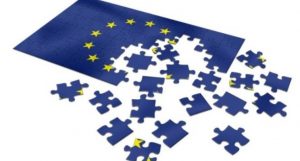The H2020 Work Programme 2018-2020 is open; if you’ve had a look inside, you may have come across something called a ‘Digital Innovation Hub’ (DIH). Ever wondered what these are? I have.
Of course, there is information on the European Commission website and even some of the active DIHs provide some insight on what they are, but still I found it difficult to see what to do with them in some of the Work Programme Call topics. And as a consultant, I should – of course – know. So here is my summary in bullet-points. Any additions or corrections are welcome, but this post is primarily meant to (also) get other people started thinking about a DIH proposal.

Background to Digital Innovation Hubs
- DIHs are one-stop shops where SME companies can go in case they have an innovation they wish to test/validate/upscale but do not have the knowledge or technical capacity/infrastructure themselves to do it.
- DIHs are supposed to act as the centre of a regional co-system around a particular theme/domain (examples: robotics, or additive manufacturing).
- DIHs are primarily created by regional authorities and/or regional development agencies, who have identified a particular theme/domain in their Smart Specialisation Strategy (S3). Currently there are already some 450 DIH active across Europe (see: http://s3platform.jrc.ec.europa.eu/digital-innovation-hubs-tool).
- Most regional DIH are funded at national/regional level through the Structural Funds. An operational DIH is a regional multi-partner collaboration of universities, RTOs, industry-representation, regional development agency and regional government authority. In addition to facilitating testing/validation of innovations by SME companies, a DIH also has the explicit aim to create a network and thus help improve the overall competitive position of these companies in their region within the theme/domain.
- DIHs can also be set up via a direct application to the ESIF (“European Structural and Investment Funds”, which combines Structural Funds, ESF and Common Agricultural Fund money).
- Several so-called DIH initiatives are also already running. These initiatives are paid directly by the European Commission as so-called CSA-projects in H2020. Their main aim is to help create further regional DIHs. They provide training and support in the organisational setting up of a new DIH. One such example is: i4MS.
DIH in the H2020 Work Programme 2018-2020
The EC provides direct support for the development of DIHs (€100 million p/a) within the H2020 Work Programme 2018-2020 in the following two ways:
- As CSA consortium projects, whereby DIHs in the same theme/domain but in different regions work together to (1) make publicity (dissemination) for innovation results by the companies that worked with them, (2) create a cross-border network on a theme/domain which allows companies to expand their network and work better together to maximise synergies.
- As IA consortium projects. In this case, the EC stipulates in the Work Programme in which theme/domain it expects the creation of a new DIH. The difference to what has been written above, is that in this case we are not talking about a regional DIH, but a cross-border (virtual) DIH of knowledge and capacity. In practice: this means universities, RTOs and large companies in different countries jointly providing access to their knowledge and infrastructure for validation/testing of innovations (as suppliers!). The level of ambition is high: the consortium must be highly specialised (knowledge, technical capacity) and/or have very expensive technical equipment available which smaller companies would never be able to afford. I would find it likely that such a consortium would also comprise one or more regional DIHs in the same theme/domain so that there is a natural link to regional industrial activities.
One thing very specific to IA-DIH is that they should transfer at least 50% of their own funding to the SME companies who want the consortium to perform a test/validation using their infrastructure. The model for doing this is called the ‘Third Party’-support model based on section K in the General Annex of the Work Programme (luckily, I already have experience working with this model, so that helps to understand how this works). In other words: the DIH-consortium will need to open Calls for Tender to which companies can apply. The consortium then decides which of the consortium members is best qualified and is available to perform the testing/validation.
A DIH-IA grant application does not have to be directly connected to an existing regional DIH, but I think this is advisable. The IA-consortium should – in any case – work toward the creation of new regional DIH is that same theme/domain so that (1) more companies gain access to infrastructure and knowledge they otherwise could not afford; (2) more companies gain access to a much bigger network of other regionally based SMEs that may provide new innovation opportunities.
The final question that remains is: so who should apply for funding in H2020 topics related to DIH? In my view, universities are probably the best placed to lead these projects. A consortium should also contain one or more RTOs and one or more regional DIH (as evidence that the proposal is founded in existing S3 initiatives). Alternatively, it could comprise a regional authority/development agency who has the stated intention (in their regional development plan) to create a regional DIH. Lastly the consortium should also comprise several larger companies that can also act as suppliers of knowledge or infrastructure to carry out the testing/validation/upscaling for the applicant SMEs.